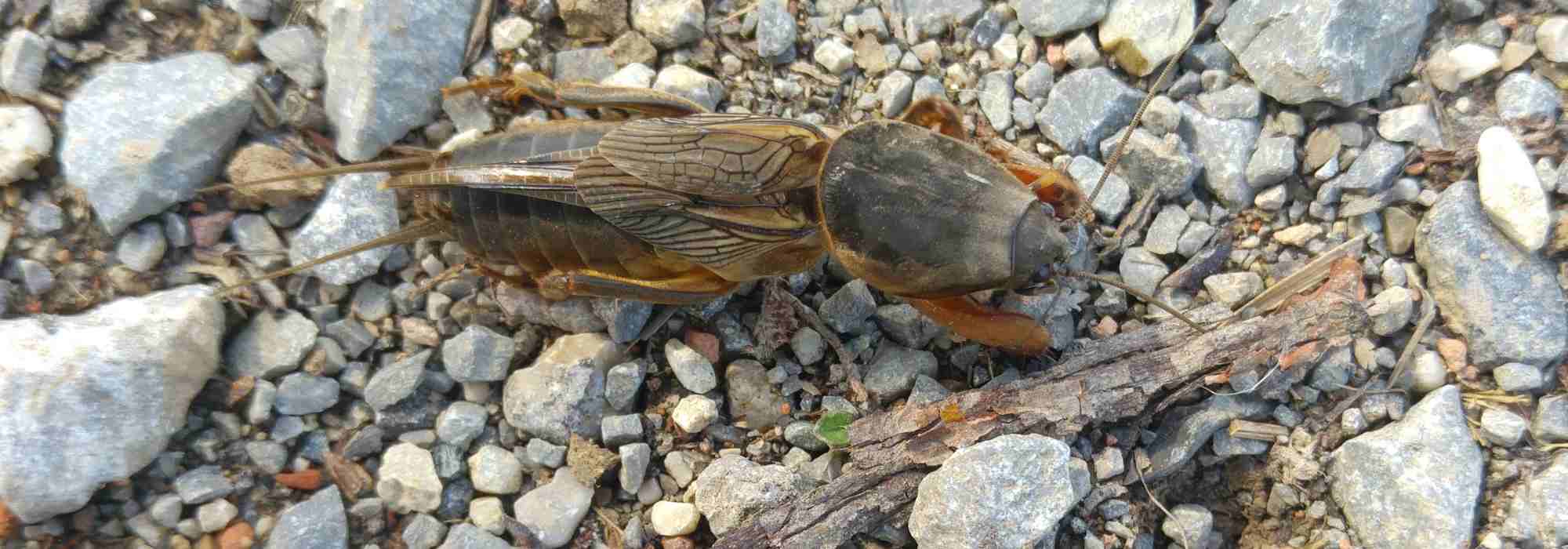
The mole cricket
All you need to know about this quirky insect
Contents
Once abundant in most gardens, the mole cricket, is one of the insects that were once problematic in vegetable gardens but has become much rarer nowadays. Both beneficial and harmful in the garden, this uniquely shaped insect is endangered in Great Britain and is in significant decline in our territory. Discover how to coexist peacefully with this orthopteran with a complex lifestyle.
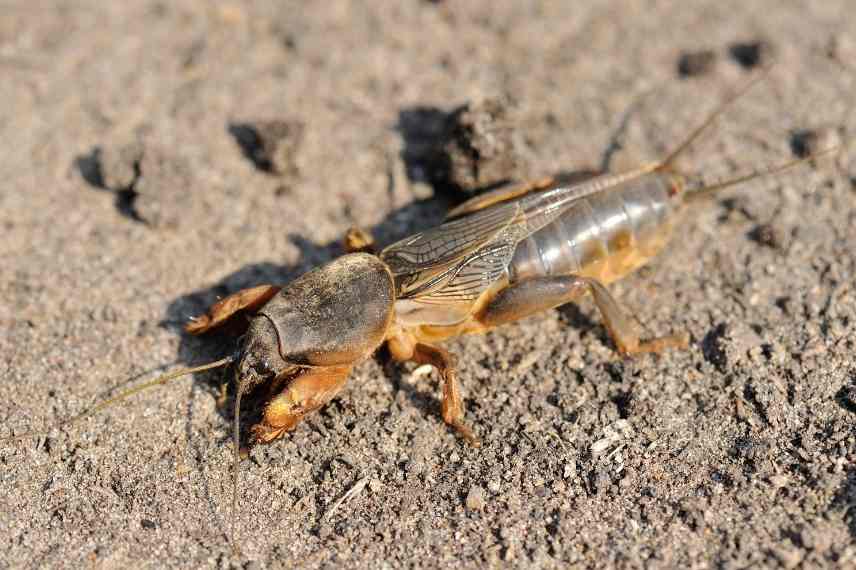
Mole cricket: who are you?
Identification
Belonging to the family of orthopterans (grasshoppers, crickets, and bush crickets), the mole cricket has a truly distinctive appearance within its order. Half-cricket, half-mole, it is sure to surprise the gardener who encounters it for the first time! It is, in fact, an insect of quite impressive size compared to what is typically found in Europe.
Reaching up to 10 cm, the mole cricket has a massive, robust body, brown on top and lighter underneath. Its head features powerful grinding mouthparts, two long thread-like antennae, and two black eyes.
The forelegs are very characteristic for identification. They are adapted for burrowing into the soil like a mole. The developed, transparent wings extend beyond the abdomen when at rest. Despite its size and weight, this insect is capable of flying over considerable distances. The abdomen, made up of ten segments, bears two elongated appendices, or cerci.
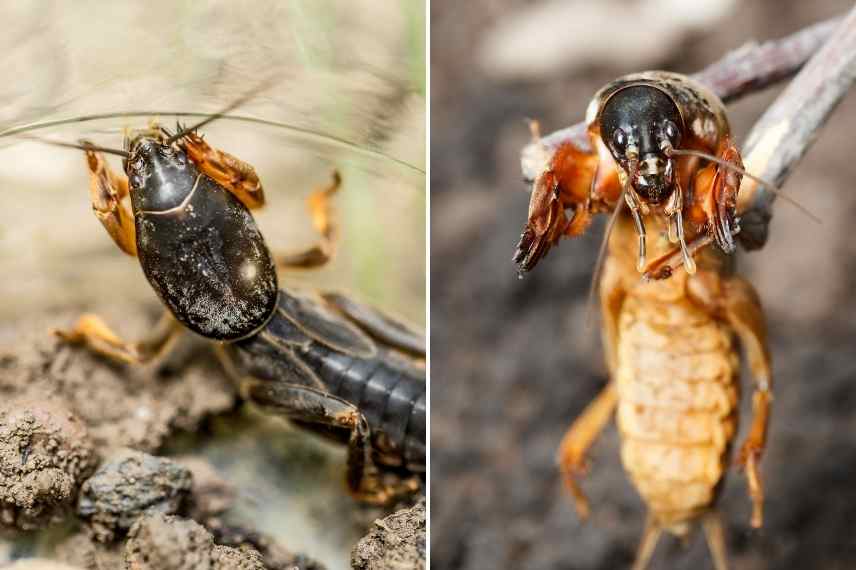
Where to find it?
The mole cricket is an insect that prefers moist, cool, and loose soils to easily dig its burrows. It can be found in wet areas, turf moors, good agricultural soils, gardens, and more.
This species is becoming increasingly rare due to the loss of its preferred habitats, as well as pesticides and the decline of its prey. It was even considered extinct in the United Kingdom until a population was rediscovered not long ago.
Life cycle
The mole cricket is a nocturnal creature. It often goes unnoticed by the gardener. However, it can be identified by its very characteristic mating call emitted at night.
The reproduction cycle lasts two years. The female will lay 200 to 300 eggs in a fairly deep burrow (20 to 40 cm). It is classified as a “hemimetabolous” insect because the juvenile individuals resemble the adults. However, they lack wings and will undergo two moults before hibernation. By April of the following year, the larvae resume their activity and become adults after three more moults. The adults reproduce the following spring.
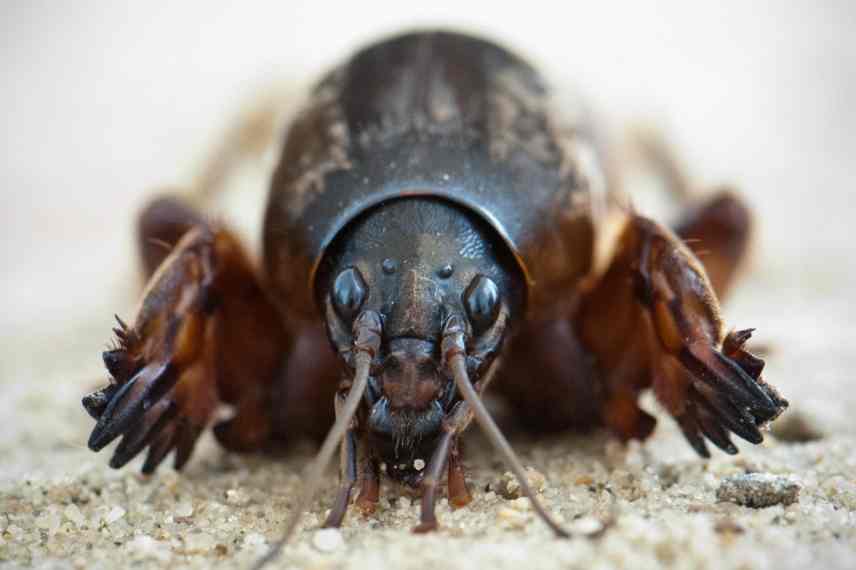
Diet
The mole cricket may attack certain roots and tubercles found in the vegetable garden. However, it has a preference for a variety of small invertebrates present in the soil. Among these, are earthworms, larvae of cockchafers, larvae of wireworms, tipulids (grey worms), slugs, and ants.
Signs of its presence
- The formation of superficial galleries, more or less straight, tending to open or crack the soil, sometimes over several metres, is a reliable indicator for identifying it. A circular entry hole with a diameter of about 6 to 8 mm is also a sign of its presence. Freshly dug and fine soil can be found in the wake of the entrance;
- It also has a very recognisable and bucolic nocturnal song;
- Gnawed tubercles and roots may also give you a clue.
Note that the garden chafer can be attracted by a lamp during the fine season, much like moths. It will therefore reveal itself in this case.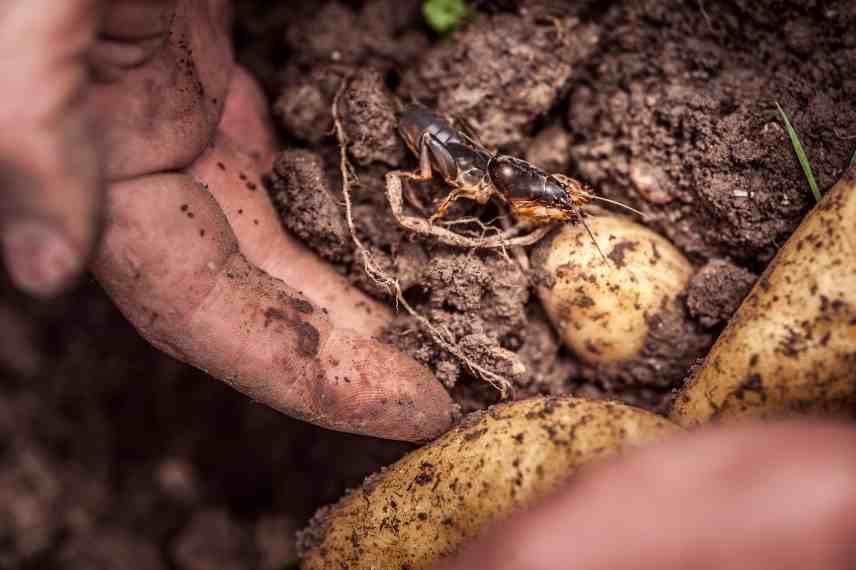 Garden chafers are often found in potato crops
Garden chafers are often found in potato crops
How to live with it and "fight" organically?
Before considering eradicating it, it’s essential to understand the ecological role of this fascinating insect. Its tunnels allow for soil aeration, which is beneficial for soil fertility. These same tunnels enable it to eliminate certain harmful larvae for gardeners: the larvae of cockchafers, wireworms, and crane flies are on the menu for this mini mole. This small predator thus plays a role in regulating phytophagous invertebrates (those feeding on plants) in the soil. The mole cricket can therefore be quite useful to the gardener.
However, it has a troublesome tendency to cut through everything in its path to enlarge its tunnel, including the roots and vegetables of our young plants. Potatoes are a common target.
Preventive control methods
- Used coffee grounds as well as nettle or fern manure sprayed preventively on your crops are effective in repelling these insects.
- They also have many enemies in the garden: blackbirds, owls, magpies, and a host of insectivorous passerines are very fond of the mole cricket;
- Encourage the establishment of hedgehogs and shrews by creating less maintained refugium areas on your property (moles are also feared predators);
- The mole cricket can also settle in the compost heap: keep it as far away as possible from your vegetable garden to prevent its spread.
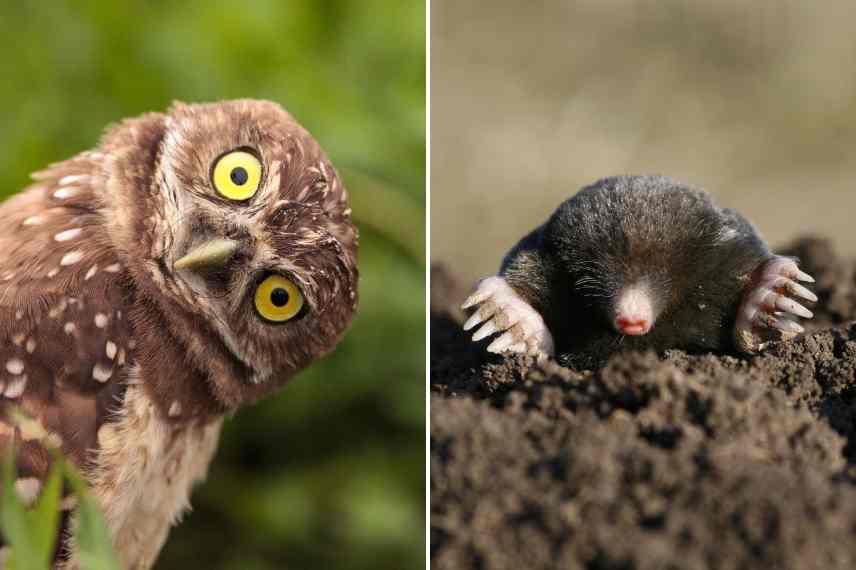 The owl and the mole, well-known predators of the mole cricket
The owl and the mole, well-known predators of the mole cricket
Direct control methods
- Bury a jar with water in the middle of a tunnel. Just make the pot flush with the surface and cover it with a small slab raised by stones. The moisture tends to attract mole crickets, and they will be trapped by the smooth walls of the jar.
- It is also possible to place the jar at the entrance of a tunnel or a recognizable exit hole due to its large diameter. Once captured, release it far from your home. Bury the jar until its opening is flush with the ground.
- A superficial working of the soil with a rake or hoe is effective in destroying the tunnels and encouraging the mole cricket to move away from your vegetable garden.
- Finally, trap it by setting up several small compost heaps in the vegetable garden to serve as bait. Check the small heaps in the following days for these insects, so you can collect and relocate them.
In conclusion
These fascinating yet sometimes problematic insects deserve a bit of our kindness. Like many species of insects, mole crickets are disappearing from our countryside. A worthy gardener will ensure to respect these creatures, which can actually be beneficial. If captured, release them far from sensitive areas, such as in a marsh or at a forest edge.
- Subscribe!
- Contents
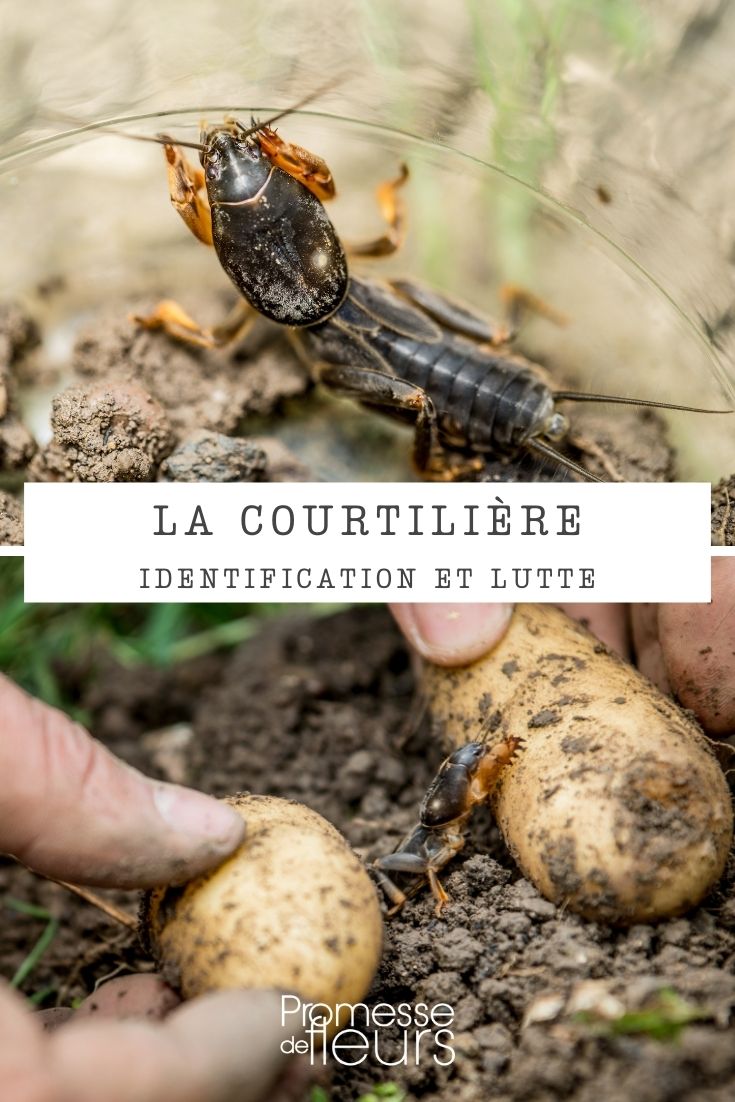































Comments